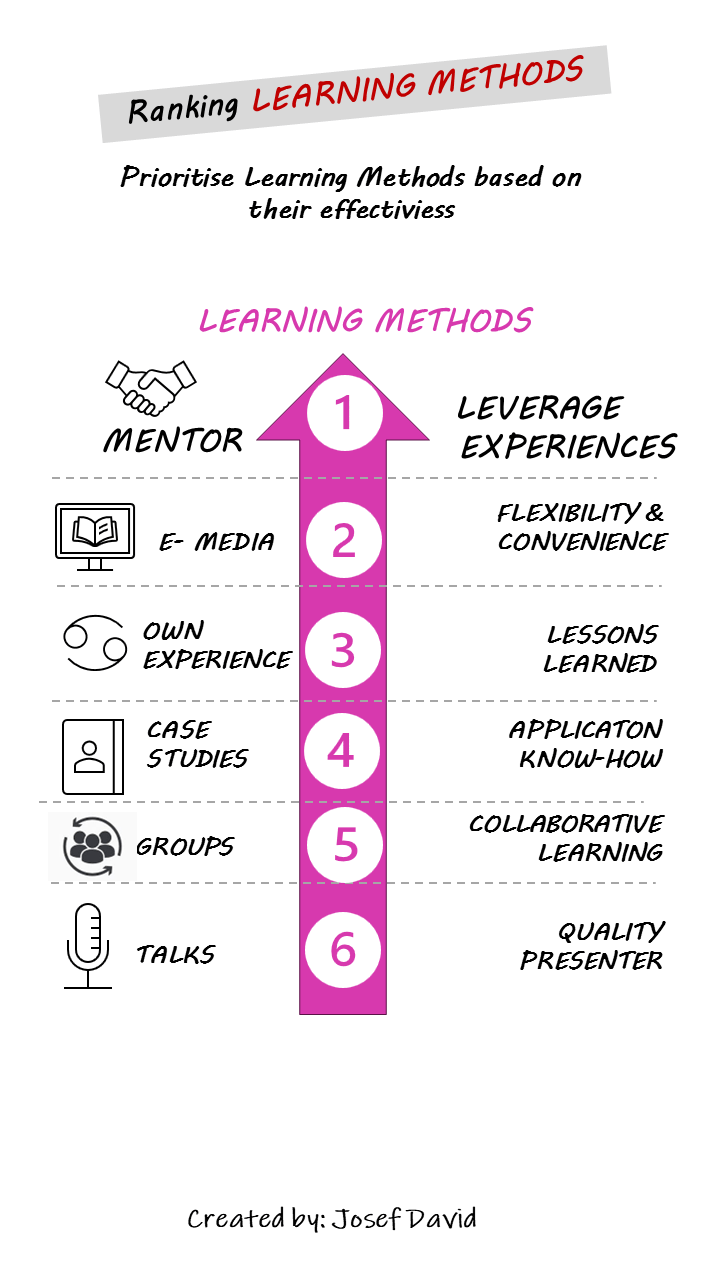Introduction
The 80/20 Pareto Rule, also known as the Pareto Principle, is a concept that suggests that 80% of outcomes result from 20% of all causes for any given event. In the context of learning opportunities, this principle can be applied to understand and prioritise the most effective methods of learning that yield the most significant results. This principle can be instrumental in guiding us on how to allocate our time and resources for optimal learning outcomes.
Learning from Own Experience
Learning from one’s own experience is a fundamental way of acquiring knowledge. It involves a process of trial and error, where we learn from our mistakes and successes. This method is highly personalised as it is based on our unique experiences and circumstances. However, it can be time-consuming and sometimes painful due to the potential for failure.
Learning from a Mentor
Mentorship provides an opportunity to learn from someone who has already walked the path you’re embarking on. A mentor can provide guidance, share their experiences, and offer valuable insights that can help you avoid common pitfalls. This method can be highly effective as it allows you to leverage someone else’s experience to accelerate your learning process.
Learning from Lectures and Talks
Lectures and talks are traditional methods of learning where information is delivered by an expert in a structured format. They provide an opportunity to gain knowledge on a specific topic within a short period. However, the effectiveness of this method largely depends on the quality of the lecture or talk and your ability to absorb information in this format.
Learning in Groups
Group learning encourages interaction and collaboration among learners. It provides an opportunity to learn from others’ perspectives, challenge your ideas, and develop critical thinking skills. However, the effectiveness of group learning can vary depending on the dynamics of the group.
Learning from Electronic Media
Electronic media such as online courses, podcasts, webinars, and educational videos offer flexible and convenient learning opportunities. They allow you to learn at your own pace and time, making them ideal for self-directed learning. However, the quality of learning can vary greatly depending on the source and your level of engagement.
Learning from Case Studies
Case studies provide real-world examples that can help you understand theoretical concepts in a practical context. They offer an opportunity to analyse situations, develop problem-solving skills, and apply knowledge in a practical setting. However, learning from case studies requires a certain level of critical thinking and analytical skills.
Ranking the Learning Opportunities using the 80/20 Pareto Rule
Applying the 80/20 Pareto Rule to these learning opportunities, we can prioritise them based on their effectiveness.
1. Learning from a Mentor: This method is likely to yield significant results as it allows you to leverage someone else’s experience.
2. Learning from Electronic Media: Given its flexibility and convenience, this method can be highly effective if used correctly.
3. Learning from Own Experience: While this method can be time-consuming, it provides valuable lessons that are highly personalised.
4. Learning from Case Studies: This method offers practical application of knowledge which can be highly beneficial.
5. Learning in Groups: The effectiveness of this method depends on group dynamics but it offers valuable collaborative learning experiences.
6. Learning from Lectures and Talks: While traditional, this method’s effectiveness largely depends on the quality of the lecture or talk.
Conclusion and Next Steps
In conclusion, while all these methods offer valuable learning opportunities, applying the 80/20 Pareto Rule can help us prioritise our efforts for optimal results. It’s important to remember that everyone’s learning style is unique, so what works best for one person may not work as well for another. Therefore, it’s crucial to understand your own learning style and preferences when choosing your learning methods.
The next step would be to identify your preferred methods based on this ranking and invest your time and resources accordingly. Remember, the goal is to maximise your learning outcomes by focusing on the most effective methods.
